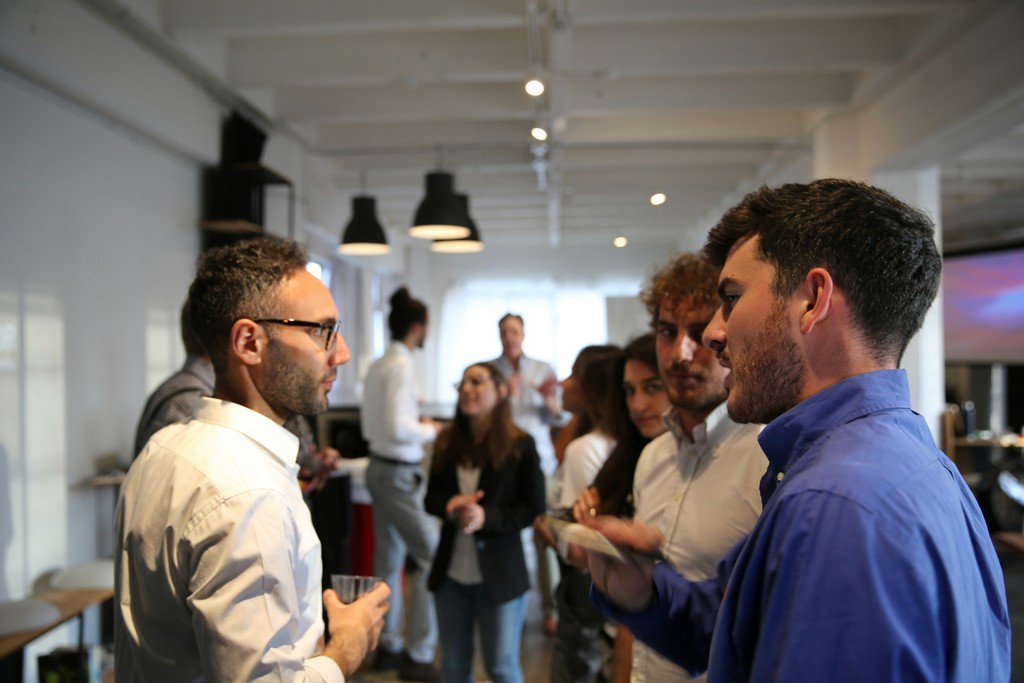One of my favourate quotes
Brian Wilson
of The Beach Boys
About the Graduate Program
The Graduate Programme provides four specialized tech streams paired with robust soft skills training. Tailored to prepare graduates for the workplace, this rigorous curriculum bridges the transition from university to professional life, honing technical abilities while cultivating vital interpersonal skills.
Transforming Design Grads into industry-ready professionals.
When the graduates join the programme, many of them lack even the most basic elements of a job-ready portfolio. Their work consisted largely of theoretical projects, inconsistent visuals, or university assignments that do not reflect the high-pressure, user-focused demands of real-world UX/UI design. Without understanding industry standards or the expectations of hiring managers, they are way off from landing their dream roles.
And that's where I come into the picture.
No Professional Portfolio
Their existing portfolios were either outdated, incomplete, or filled with academic projects that lacked real-world relevance.Unstructured Design Process
Many grads jumped straight into creating UI screens without understanding the importance of user research, ideation, and validation.Lack of Industry Awareness
They were unaware of hiring trends, design tool standards, and collaborative workflows used in the industry.Imposter Syndrome
The overwhelming gap between their skillset and job requirements left them feeling unprepared and unsure of their potential.
Bridge the gap between academic knowledge and industry expectations?
Visionary Leadership by crafting a curriculum that bridges the gap between academia and industry. I brake down the key components of a successful portfolio, emphasizing not just the visuals but also storytelling, problem-solving, and the ability to demonstrate impact.
Hands-On Mentorship
I like taking a hands-on approach to guide each graduate, treating their journey as a collaborative project:
Weekly 1:1 Sessions: Personal feedback tailored to each grad’s strengths and weaknesses.
Design Reviews: Constructive critiques during bi-weekly team meetings to sharpen their eye for detail.
Problem-Solving Workshops: Real-world challenges introduced in every phase, from redesigning outdated user flows to creating design systems from scratch.
Industry Knowledge and Network Building
I try as much to leverage from my industry network to bring in Subject Matter Experts (SMEs) for guest lectures and workshops:
Experts from top companies and hiring managers expectations and portfolio-building advice.
I connect grads with hiring managers during the final showcase event, ensuring they are visible to the right audience.
Transforming Portfolio Work
Through rigorous challenges and guidance, the grads learn how to build a portfolio that told compelling stories:
Before: Their portfolios featured academic wireframes and basic UIs, with no context or process documentation.
After: They showcased user-centric designs with clear narratives, demonstrating:
Problem statements.
User research findings.
Design iterations based on usability feedback.
Visual designs that aligned with modern UI trends.
Example Transformation
All grads work on real life projects and design challenges under my mentorship with the help of senior designers:
They conduct interviews to identify user pain points.
They iterated on wireframes based on feedback.
They deliver polished prototypes that address design challenges they came across.
Each project required grads to follow a full design process, giving them a realistic taste of the challenges they’d encounter in the workplace:
Problem Discovery
Grads conducted stakeholder interviews and user research to understand project goals.Example: For a non-profit project, grads uncovered that volunteers struggled with a cumbersome signup process, which became the focal problem to solve.
Research and Ideation
They analyzed user data to uncover pain points and opportunities.Created user personas, empathy maps, and journey maps to guide their designs.
Prototyping and Testing
Produced low-fidelity wireframes, followed by high-fidelity prototypes in tools like Figma.Conducted usability tests with real users to refine their solutions based on feedback.
Final Deliverables
Delivered polished UI designs and interactive prototypes alongside a comprehensive presentation of their design process.Example Deliverable: A mobile app prototype for a food donation platform with features to match surplus food from restaurants to shelters.
To make the experience even more realistic:
Agile Practices Were Introduced
Grads worked in sprints, attending stand-ups and retrospectives to mimic a product team’s workflow.Cross-Functional Teamwork
They collaborated with mock developers (played by the Practice Lead and industry guests) to consider the technical feasibility of their designs.Stakeholder Presentations
Each project ended with a formal presentation to stakeholders, teaching grads how to communicate their designs, justify decisions, and handle feedback—essential skills for the workplace.
Confidence in Work Environments
By solving actual problems for real stakeholders, grads learned how to navigate the complexities of the design process, from ambiguous briefs to tight deadlines. When they entered their first jobs, they were already familiar with the expectations of collaborative work.Job-Ready Portfolios
The real-world projects became the centerpiece of their portfolios, showcasing not only polished designs but also the thought process and problem-solving skills behind each solution.Immediate Value to Employers
Employers noted that the grads didn’t need extensive onboarding—they already understood how to tackle real challenges.
As part of the UX/UI Graduate Programme, graduates participated in hackathons—high-energy, time-bound design sprints organized in collaboration with leading companies and organizations. These hackathons provided an invaluable opportunity for graduates to tackle real-world challenges in a competitive yet collaborative environment. They also served as a stage for the graduates to showcase their skills, often impressing industry professionals and clients with their innovative solutions and professionalism.
Hackathons were included as they are recognized as microcosm of real-world design challenges:
Time Pressure
They mirror the fast-paced nature of industry deadlines.Cross-Functional Collaboration
Grads work alongside developers, product managers, and other professionals.Real Stakeholder Feedback
Direct interaction with clients and industry leaders builds presentation skills and confidence.Exposure to Industry Trends
Grads solve challenges related to cutting-edge topics like AI, fintech, or sustainability.
Hands-On Experience with Industry Problems
Hackathons gave graduates a chance to apply their knowledge to real challenges, refining their ability to think critically and deliver impactful solutions.Soft Skill Development
Grads learned how to:
• Communicate their ideas clearly during high-stakes
presentations.
• Collaborate in diverse teams under pressure.
• Accept and implement feedback from clients and
stakeholders.Real Stakeholder Feedback
Direct interaction with clients and industry leaders builds presentation skills and confidence.Exposure to Industry Trends
Grads solve challenges related to cutting-edge topics like AI, fintech, or sustainability.
“The way they balanced innovation and practicality was extraordinary. It’s clear that this programme has prepared them for the real world.”
Startup Founder
“Their designs captured the essence of our mission perfectly. It felt like they had been working in the industry for years.”
Non-Profit Leader
QUOTE
Zwai
Design Engineering Lead
Portfolio-Driven Success
Every graduate leaves the programme with a portfolio containing 1–3 high-quality case studies, ready to present to hiring managers.Hiring Success
85% of graduates secured roles within three months, with placements in companies like local startups, tech giants, and global consultancies.Growth in Confidence
Grads went from self-doubt to confidently pitching their designs. One remarked:“I didn’t just learn UX/UI here—I learned how to be a designer.”
From Fish Out of Water to Industry Stars
The combination of real-world projects, hackathons, and the guidance I provide transforms graduates from inexperienced designers to confident, capable professionals.
By the time they enter the workforce, they had already tackled challenges, worked with stakeholders, and impressed industry leaders, ensuring they didn’t just survive in the design industry, but they thrived.
The Graduate Program reinforced several essential lessons about nurturing and developing future design talent
1. Real-World Experience is Indispensable
Incorporating real-world projects and hackathons proved crucial in preparing graduates for industry challenges. These hands-on experiences allowed them to apply theoretical knowledge, collaborate with stakeholders, and gain confidence in their ability to deliver impactful solutions.
2. The Power of Iterative Feedback
Regular critiques and 1:1 mentorship sessions highlighted the importance of iterative feedback. Graduates learned to embrace constructive criticism as a growth tool, improving their designs and refining their storytelling skills.
3. Soft Skills are as Vital as Technical Skills
Fostering interpersonal skills, such as communication, collaboration, and presenting to stakeholders, was as critical as teaching design principles. These skills helped graduates navigate the complexities of professional environments with confidence.
4. Empathy Drives Design Excellence
Real-world challenges, especially those with social impact, taught graduates to prioritize empathy in their design process. Understanding user pain points and aligning solutions with stakeholder needs ensured their work was both meaningful and practical.
5. Hackathons Build Resilience and Creativity
Time-bound, high-pressure hackathons showcased the value of rapid problem-solving and creative thinking. These events prepared graduates to thrive in fast-paced, collaborative environments.
6. Networking Accelerates Growth
Exposure to industry professionals and Subject Matter Experts during workshops, reviews, and presentations gave graduates valuable insights and opportunities, demonstrating the importance of building connections early in their careers.
7. Confidence Comes Through Preparedness
By bridging the gap between academia and the workplace, the programme instilled confidence in graduates. Real projects, polished portfolios, and stakeholder presentations ensured they felt ready to contribute from day one in their roles.


















